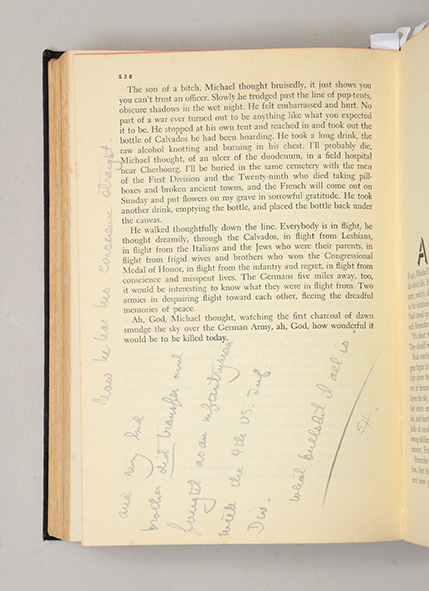Adam Douglas presents this first edition of Ernest Hemingway’s The Young Lions. This is Hemingway’s annotated copy, marked by him in two campaigns in March 1949 and January 1950 and presented to his Italian friend, Carlo Kechler, identifying places in the text where Hemingway accused Shaw of maligning his younger brother, Leicester Hemingway (1915–1982), the basis of the character Leroy Keane in the novel.
Hemingway’s presentation inscription pencilled on the front free endpaper reads in full: “For Carlo from Ernesto. Marked from 527 on (annotated) EH. 2/3/49 / 22/11/50 San Martino di Codroipo EH. Museum Piece – Do not Fold. EH.” Carlo Kechler was one of three brothers, Italian aristocrats with whom Hemingway went duck hunting in Friuli. Hemingway’s time with the Kechlers formed part of the backdrop to Across the River and Into the Trees (1950).
Irwin Shaw had served in Europe during the Second World War in the same documentary film unit as Hemingway’s younger brother Leicester, and Shaw used Leicester as the model for his character Leroy Keane, an obnoxious communications clerk striving to live up to the image of an elder brother who had been a hero of the First World War.
Though this item is now sold, all our catalogued works by Ernest Hemingway can be viewed online here.





